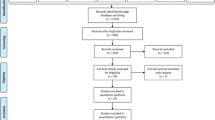Abstract
We deal with a problem of designing a user interface for touchscreen phones with respect to special needs of seniors. We conducted qualitative study (\(\hbox {n}=5\)) followed by quantitative one (\(\hbox {n}=118\)). From the comparison of our study with existing studies we observed an obvious trend in more extensive usage of advanced features, which cannot be explained only by the shift of the younger seniors to older age groups. We provided a set of recommendations and we designed a new touchscreen phone user interface to support needs of active seniors. In comparison (\(\hbox {n}=15\)) with standard Android UI our solution had higher completion rate in two of four complex tasks and 6\(\times \) higher completion rate of all tasks while producing 2.4\(\times \) fewer errors. Our interface was subjectively perceived more comfortable, efficient and producing less errors.









Similar content being viewed by others
Notes
BIG Launcher—http://biglauncher.com.
EqualEyes—http://equaleyes.com.
Protege Launcher SOS—http://goo.gl/HxmPRq.
Wiser—http://www.wiser-me.com.
Mobili—http://www.seniorsphone.mobi.
Necta Launcher—http://www.necta.us/.
KoalaPhone Launcher—http://goo.gl/74KJXg.
References
Abdulrazak B, Malik Y, Arab F, Reid S (2013) Phonage: adapted smartphone for aging population. In: Biswas J, Kobayashi H, Wong L, Abdulrazak B, Mokhtari M (eds) Inclusive society: health and wellbeing in the community, and care at home, Lecture Notes in Computer Science, vol 7910, pp 27–35. Springer, Berlin
Al-Razgan M, Al-Khalifa H, Al-Shahrani M, AlAjmi H (2012) Touch-based mobile phone interface guidelines and design recommendations for elderly people: a survey of the literature. In: Huang T, Zeng Z, Li C, Leung C (eds) Neural information processing, Lecture Notes in Computer Science, vol 7666, pp 568–574. Springer, Berlin
Aligator: ALIGATOR Products (2014). http://www.aligator.cz/en/products
Asano Y, Saito H, Sato H, Wang L, Gao Q, Rau PLP (2007) Tips for designing mobile phone web pages for the elderly. In: HCI 2007, pp 675–680. Springer, Berlin
Baranyi P, Csapó Á (2012) Definition and synergies of cognitive infocommunications. Acta Polytech Hung 9(1):67–83
Batu Salman Y, Kim YH, Cheng HI (2010) Senior 2014; friendly icon design for the mobile phone. In: IDCTA 2010, pp 103–108
Berkowitz JP, Casali SP (1990) Influence of age on the ability to hear telephone ringers of different spectral content. HFES annual meeting proceedings, pp 132–136
Emporia Telecom: Czech seniors and their relationship to cell phones (2012)
Emporia Telecom: Emporia telecom—overview (2014). http://www.emporiatelecom.com/products/overview/
Fisk AD, Rogers WA, Charness N, Czaja SJ, Sharit J (2009) Designing for older adults: principles and creative human factors approaches, 2nd edn. CRC Press, Boca Raton
Gartner: smartphone sales surpassed sales of feature phones (2014). http://www.gartner.com/newsroom/id/2665715
Horrigan J (2009) Wireless internet use. Pew Research Center, Washington. http://www.pewinternet.org/2009/07/22/wireless-internet-use/
Jastrzembski TS, Charness N (2007) The model human processor and the older adult: parameter estimation and validation within a mobile phone task. J Exp Psychol 13(4):224–248
Kim H, Heo J, Shim J, Kim M, Park S, Park S (2007) Contextual research on elderly users’ needs for developing universal design mobile phone. In: UAHCI 2007, pp 950–959. Springer, Berlin
Krug S (2000) Don’t make me think!: a common sense approach to Web usability. Pearson Education India, Gurgaon
Maeve D, Rainie L (2012) Cell phone activities 2012. Pew Research Center, Washington. http://www.pewinternet.org/2012/11/25/cell-phone-activities-2012/
Nielsen SH, Skovenborg E (2004) Evaluation of different loudness models with music and speech material. In: Audio Engineering Society Convention 117
Olwal A, Lachanas D, Zacharouli E (2011) Oldgen: mobile phone personalization for older adults. In: CHI 2011, pp 3393–3396. ACM, New York, NY, USA
Owsley C, Sekuler R, Siemsen D (1983) Contrast sensitivity throughout adulthood. Vis Res 23(7):689–699. doi:10.1016/0042-6989(83)90210-9
Pak R, McLaughlin A (2010) Designing displays for older adults (human factors and aging series), 1st edn. CRC Press, Boca Raton
Rainie L, Keeter S (2006) Americans and their cell phones. Pew Research Center, Washington. http://www.pewinternet.org/2006/04/03/americans-and-their-cell-phones-2/
Renaud K, van Biljon J (2010) Worth-centred mobile phone design for older users. Univers Access Inf Soc 9(4):387–403
Smith A (2011) Americans and their cell phones. Pew Research Center, Washington. http://www.pewinternet.org/2011/08/15/how-americans-use-their-cell-phones/
Smith A (2014) Older adults and technology use. Pew Research Center, Washington. http://www.pewinternet.org/2014/04/03/older-adults-and-technology-use/
StatCounter Global Stats: top 5 desktop, tablet & console browsers from Oct 2013 to Oct 2014 (2014). http://gs.statcounter.com/
Statistický Úřad Český (2013) Projekce obyvatelstva České republiky (projekce 2013)
Sulaiman S, Sohaimi IS (2010) An investigation to obtain a simple mobile phone interface for older adults. In: 2010 international conference on intelligent and advanced systems (ICIAS), pp 1–4. IEEE
Timiras PS (2007) Physiological basis of aging and geriatrics, 4th edn. Informa Healthcare, London
Acknowledgments
This research has been supported by the project Design of special user interfaces funded by Grant No. SGS13/213/OHK3/3T/13 (FIS 161—832130C000).
Author information
Authors and Affiliations
Corresponding author
Rights and permissions
About this article
Cite this article
Balata, J., Mikovec, Z. & Slavicek, T. KoalaPhone: touchscreen mobile phone UI for active seniors. J Multimodal User Interfaces 9, 263–273 (2015). https://doi.org/10.1007/s12193-015-0188-1
Received:
Accepted:
Published:
Issue Date:
DOI: https://doi.org/10.1007/s12193-015-0188-1




